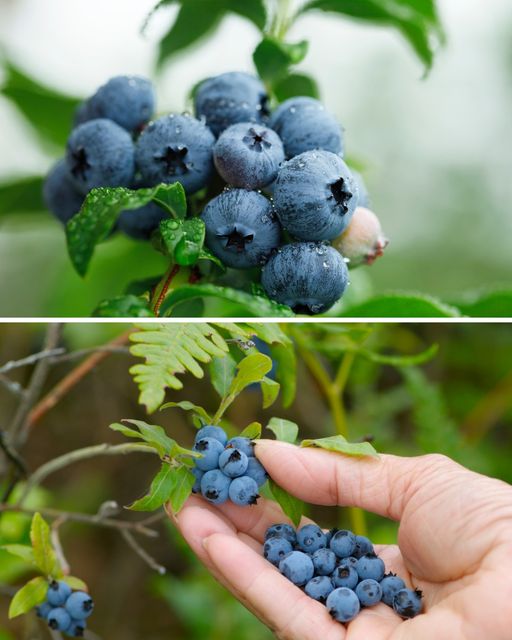Shrubs with berries can be a wonderful addition to your garden. They can provide you or the local wildlife with food, and can liven up your garden’s color palette with bright shades of red. Red berries are particularly welcome in the winter season for their visual impact, and red fruits often attract a variety of birds and wildlife.
Here are 14 garden shrubs with red berries worth growing and enjoying in your garden. (Because not all berries are edible, be sure you read closely below to know the difference between ornamental, inedible berries, and edible berries, and which plants are safe for you, your family, your pets, and your backyard birds and squirrels.)
-
01of 14
American Winterberry ‘Red Sprite’
:max_bytes(150000):strip_icc():format(webp)/hollyredsprite-d786f1f1b18a4885b1ce47765e89fd94.jpg)
Janet / Flickr / CC BY 2.0 This species of holly (Ilex verticillata) has the brightest red berries of all. If you’ve grown holly, you know it’s necessary to have three shrubs total (two males and one female) in order to pollinate for berry production; if a female shrub is not pollinated it won’t produce berries. Red Sprite is a good semi-dwarf variety that grows up to 5 feet tall, with good berry production. The birds will flock to your holly for the berries that may linger through spring, but tese berries should not be eaten by humans or pets. This holly is deciduous and not evergreen, often the berries will remain after the leaves fall off.
- USDA Hardiness Zones: 3 to 9, cold and heat tolerant
- Light: Partial sun to full sun
- Mature Size: 3-5 feet tall and wide
- Berries: Edible to birds, mildly toxic1 to humans, cats, dogs
-
02of 14
Red Currants
:max_bytes(150000):strip_icc():format(webp)/redcurrants-89035f7924de4be9aa822d7ff9573a8b.jpg)
Susanne Wiik / Flickr / CC BY 2.0 The red currant bush (Ribes rubrum) has translucent, glassy looking red berries that make a delicious jelly! The tart berries are also a tasty snack for songbirds. The berries also come in a white variety that is somewhat sweeter than the red ones. Native to Europe, this shrub is widely cultivated for its fruit, which is rich in vitamin C. The famous Linzer torte of Austria typically uses red currant jelly for its filling. Red currents are rich in vitamins B and C, and like most berries, full of beneficial fiber.
- USDA Hardiness Zones: 3 to 5, very cold hardy
- Light: Morning sun, afternoon shade
- Mature Size: 3-5 feet tall
- Berries: Edible to humans and wildlife
-
03of 14
Red Chokeberry
:max_bytes(150000):strip_icc():format(webp)/redchokeberry-431e5ad5fc804057949b8e3b84635ba0.jpg)
Sara Rall / Flickr / CC BY 2.0 Red chokeberry (Aronia arbutifolia) is native to eastern Canada and the eastern and central United States. With its white flowers in spring, glossy red berries in summer, and gorgeous red autumn foliage, it has three seasons of visual interest. The flowers in spring attract butterflies. The fleshy berries attract birds from late fall through winter. The shrub, akin to a small tree, is upright and tends to put out suckers.
The berries have a sour, astringent taste, used to make jams, wine, candy, syrup and other foods. They can be eaten raw but most people find them a bit too sour to enjoy in their natural state.
- USDA Hardiness Zones: 4 to 9, cold and heat tolerant
- Light: Partial sun to full sun
- Mature Size: 5-10 feet high, 3-5 feet wide
- Berries: Edible to birds
-
04of 14
Linden Viburnum
:max_bytes(150000):strip_icc():format(webp)/lindenviburnumberries-0dc5b03ae944412c8b12b0418dcaaf65.jpg)
Nan / Flickr / CC BY 2.0 This deciduous deer-resistant shrub, native to eastern Asia, was introduced to the mid-Atlantic states in the early 1800s. The Linden viburnum (Viburnum dilatatum), also known as linden arrowwood, is named for the leaves which resemble linden tree leaves. It puts out clusters of small white flowers in spring followed by dense clusters of red berries in autumn, which gradually turn a blackish red color in winter.
Birds eat the berries in winter. In autumn the leaves turn shades of red and copper. There are various cultivars which differ somewhat in shape and form, including ‘Iroquois,’ ‘Oneida’, ‘Michael Dodge’, and ‘Mt. Airy’. It grows somewhat aggressively, forming dense thickets quickly if not controlled.
- USDA Hardiness Zones: 5a to 8b, somewhat cold tolerant
- Light: Partial sun to full sun
- Mature Size: 8-10 feet high and wide
- Berries: Edible to birds
-
05of 14
Spindle Tree
:max_bytes(150000):strip_icc():format(webp)/spindletree-c8b7697f8d974cd6b5776ef0eeab3da6.jpg)
Susanne Nilsson / Flickr / CC BY-SA 2.0 This beautiful upright shrub is native to much or Europe, hence its other common name European Spindle. The spindle tree (Euonymus europaeus) bears red fruits attractive to birds and the birds help this plant reseed widely so it has a reputation for being somewhat invasive.
The small white flowers in spring are unremarkable, but the colorful pink-red capsules that open to reveal orange seeds are showy and distinctive in autumn, along with the shift of the leaves’ colors, ranging from yellow to reddish purple.
- USDA Hardiness Zones: 4 to 7, cold tolerant
- Light: Partial shade to full sun
- Mature Size: 12-20 feet high, 2 to 3 feet wide
- Berries: Edible to birds
- USDA Hardiness Zones: 4 to 7, cold tolerant
-

